- Home
- Alison Weir
Katherine Swynford Page 11
Katherine Swynford Read online
Page 11
For Katherine, though, Kettlethorpe must have come as a shock after years of living in royal households where comfort and a laden table were taken for granted. It would appear that she faced this challenge with equanimity and resource, taking her responsibilities as lady of the manor seriously, which argues a certain strength of character. She would also have had to learn to juggle the demands of being the chatelaine of a knightly household and serving in the Lancastrian menage with successive pregnancies and a growing family. Being married at such a young age, like many girls of her caste, she had immediately to face the sometimes brutal realities of childbirth, living as she did in an era of high maternal and infant mortality; in this respect, she appears to have been quite hardy, for she was to survive at least seven or eight pregnancies with no apparent ill effects.
So in every aspect that mattered, Katherine made a success of her marriage. She clearly did her duty as a wife; she actively immersed herself in the life of the manor of Kettlethorpe, to such an extent that for many years she would be known primarily as the Lady of Kettlethorpe; she fitted seamlessly into her husband's social circle in Lincoln and the county at large, doubtless rnixing too with his Swynford relatives and their connections by marriage; and she dutifully bore her husband the children that all men of property desired.
Their eldest child was probably Blanche, who is known to history through references in a papal petition, the Duchy records and a grant of wardship in John of Gaunt's Register. She was old enough by 1368 to be placed in the chamber of the Lancastrian princesses, probably as a playmate, and in view of the likely date of birth of her younger sister Margaret, must have been born no later than 1363. Margaret was the daughter who became a nun in 1377, and she probably arrived in 1364; Katherine was in attendance on the Duchess Blanche in January 1365, and later that year she perhaps became pregnant with her third child.
Margaret may have been named for Margaret of Hainault, her grandfather's patroness. There is no actual record of her parentage, but several factors point to her being the daughter of Katherine and Hugh Swynford: first, her surname; second, the fact that she became a nun at Barking, one of the most exclusive abbeys in the land, and was nominated by the King himself, which suggests the influence of John of Gaunt, who was then the lover of Katherine Swynford; third, that the King, at the same time, nominated to St Helen's Priory in London Elizabeth Chaucer, who was probably the eldest daughter of Katherine s sister Philippa -which suggests a link between the two girls, and more influential manoeuvring behind the scenes; fourth, the possibility that Elizabeth Chaucer was later transferred to Barking because her cousin Margaret Swynford was there; fifth, there is evidence that two of Katherine's sons by John of Gaunt patronised Barking Abbey, in which Margaret, who was probably their half-sister, lived;49 and last, the likelihood of Margaret's birth occurring at a time when Katherine was bearing children to Hugh Swynford.
It has been suggested that there was a third daughter, Dorothy. According to Thomas Stapleton, writing in 1846, Dorothy married Thomas Thimelby of Poolham near Horncastle, Lincolnshire, who was Sheriff of Lincolnshire in 1380 and died in 1390, but that claim is usually dismissed on the grounds that the name Dorothy was not used in England until the sixteenth century. That is incorrect: although uncommon, there are instances of English girls being named after the fourth-century Christian martyr St Dorothy of Cappadocia in mediaeval times, and she features in stained glass and screen paintings in England, particularly in the late fourteenth and fifteenth centuries. In fact, her legend had been known in England since Saxon times. St Dorothy's feast day is 6 February, which was perhaps the birthday of Katherine's daughter (who was possibly born in 1366), and might account for the unusual choice of name.
Evidence to support Stapleton's unsubstantiated claim is perhaps to be found in Irnham Church, where the coats of arms of the Thimelbys, the Belesbys, the Luttrells and Sir Hugh Swynford are to be found in abundance on tombs and in stained glass. All were prominent Lincolnshire families, and all were linked by marriage. Given the armorial evidence in the church, it is not therefore beyond the bounds of possibility that Thomas Thimelby married Dorothy Swynford, the daughter of Hugh and Katherine, nor that he had children by her, for there were Thimelbys still living at Poolham in the early seventeeth century.
The dates of birth of the Swynford girls are not recorded — those of royal daughters born in this period are hard enough to come by, let alone those of knightly birth. It was often the mediaeval married woman's lot to bear a child each year, there being no effective birth control, so it was easily possible for Katherine to have borne Hugh four children in up to a decade of married life, even taking into account the periods he spent abroad. Since many children died in infancy, and the young were seen as marriageable assets, it was thought desirable, among the landed classes, to have as many as possible, so perhaps Katherine had unrecorded infants who did not survive.
In 1396, whilst affirming to the Pope that he had not committed adultery with Katherine during the lifetime of her husband, John of Gaunt revealed that he had stood godfather to one of her daughters by Hugh: ‘Duke John had lifted from the sacred font a daughter of Katherine, begotten by another man.' In so stating.John was admitting an impediment to his marriage to Katherine, the creation of a fraternal bond of brotherhood, or compaternity, that effectively made them spiritually brother and sister. John also affirmed that 'the impediment of the aforesaid compaternity' was 'not notorious but rather occult', meaning that it was private or secret. This secrecy has seemed puzzling to some, since it suggests there was some sinister reason for preventing John's sponsorship from becoming public knowledge, and one conclusion that several writers have reached was that he was the baby's real father. This is highly unlikely. Apart from it being plainly stated in the petition that the baby had been 'begotten by another man', and the fact that a man could not stand godfather to his own child, John was later willingly to acknowledge four bastards by Katherine, who were all given the surname
Beaufort; why therefore should he not have acknowledged a fifth, and given it too that name? Even if this child had been born before the others, in Hugh's lifetime, there was no reason for concealment in 1396, and anyway, in his petition to the Pope, John admitted everything about his relationship with Katherine, even his own adultery: he kept nothing back.
In the circumstances, it would have been foolish and incomprehensible to do so. This petition was of the utmost importance. John wanted the Pope to confirm his marriage to Katherine and so legitimise their children. Had he lied in that petition, it would have been self-defeating and catastrophic, for he risked receiving a flawed judgement from the Pontiff that would have nullified the validity of both the marriage and the legitimation process, not to mention imperilling his immortal soul by the anathema that would automatically have been visited upon him for lying. It is unthinkable that an intelligent and honourable man such as the Duke, who was clearly setting his affairs in order and safeguarding the future of his children — and who would have known what was at stake, both materially and spiritually — should have deliberately misrepresented his case to the Pope and courted damnation by so serious an omission. For even in the educated mediaeval mind, the prospect of divine judgement, purgatory and hell itself loomed large and terrifying. For this reason we must accept what John wrote in that petition as the truth.
The reason for keeping John's private sponsorship of Katherine's child a secret surely lies in the fact of the compaternity that resulted from it: by becoming her infant's godfather, he effectively placed himself within the forbidden degrees of affinity to Katherine, for compaternity bound parents and sponsors together in kinship, and created a barrier to them marrying or having sexual intercourse. His sponsorship would initially have been a kind gesture on the part of a good lord, an example of the patronage he extended to those who served him and his family well; it may have followed on from Katherine giving birth at one of the ducal residences, perhaps prematurely; it might have been at Blanche's r
equest. And we may suppose that the baptism was only relatively ('rather') occult, a private affair attended just by the Duke and Duchess, a few members of their households, and the proud parents. It was only later, when Katherine became John's mistress, that the compaternity became a matter for concealment, for the lovers were no doubt aware that it laid upon them an additional burden of sin above that of adultery, and could only have intensified the scandal their affair was causing.
It has been convincingly suggested that it was Blanche Swynford to whom John stood godfather. In this capacity, he bound himself to take some responsibility for her spiritual needs and her material well-being, and his exalted rank would have conferred on her a special status. John seems to have ably fulfilled his obligations: in 1375, he granted Katherine the wardship of the heir of Sir Robert Deyncourt and the marriage of that heir for her daughter Blanche, thus effectively providing for Blanche's future as she approached marriageable age. And if the Duke was her godfather, the name Blanche, in honour of his wife - who might well have stood godmother - was a natural choice. The Duchess Blanche too seems to' have taken a special interest in the little girl, for before 1368, she placed Blanche Swynford in the chamber of her own daughters. All these factors suggest that Blanche was the eldest child of Katherine and Hugh.
Like other married couples in the Lancasters' service, the Swynfords divided their time between the ducal court and their own estates, which were run by stewards and other feudal officials in their absence. Hugh would spend a considerable part of their married life campaigning in France and Spain, while Katherine — in between confinements — continued to serve the Duchess. Given the familial nature of the Lancastrian household, she would have been permitted to have her growing children with her, to be brought up in company with the ducal children.
Caring for the infants of the Duke and Duchess was probably a large part of Katherine's duties as a chamber servant.58 Young Philippa and Elizabeth were growing sturdily. The elder John was probably dead by April or May 1366, when his brother and namesake was born: on 4 May that year, one Robert de Walkyngton was lavishly rewarded with £6.13s.4d
(£2,237) for bringing the news of the second John's birth to his grandfather the King.59 But the second John also died young - probably after April 1367 — as did Edward of Lancaster, who had been born around 1365 and named probably for the King, and who departed this life soon afterwards. With the Duchess frequently pregnant, recovering from childbirth, or grieving over the loss of an infant, Katherine would have been kept busy. And she would surely have been caught up in the emotional life of the household, rejoicing in the births of new babies to the Duke and Duchess, sharing in their pain when their infants died, and doubtless observing the enduring love and devotion between them.
That Katherine had a genuine religious faith cannot be doubted. Shortly before 24 January 1365, John Buckingham, Bishop of Lincoln from 1363 to 1398, granted her, as ancille to the Duchess of Lancaster, the privilege of having divine Service — the canonical offices of the Church - celebrated privately until Pentecost of that year, whenever she visited Leicester.01 The bestowal of such a privilege, by a bishop who had doubtless come to know Katherine since she had married Sir Hugh Swynford and become prominent among the Lincolnshire gentry, proves that she was not only pious but was an important and well-respected member of the Duchess's household. The performance of the divine offices would necessitate her having some personal space to facilitate it, such as a chapel, an oratory or even a private chamber, and she would have needed too a portable altar — a luxury item in those days. Servants in royal and noble households in the fourteenth century lived communally, sleeping in dormitories or in the chambers of their lords or ladies; privacy was the preserve of the rich. The fact that Katherine was granted this privilege and enjoyed sufficient privacy to take advantage of it, together with the Duke acting as godfather to her child and later rewarding her for good service to his wife, singles her out as one who was very highly favoured by her employers.
That said, it is unlikely that Katherine got to exercise her pious privilege. The ducal household was at Bolingbroke in Lincolnshire until 18 April 1365, then it moved south to the Savoy; it was still in residence there on 4 June, and did not arrive at Leicester until 14 June, some time after Pentecost, and too late for Katherine to have her private services.
By 12 September 1366, Philippa de Roët, Katherine's younger sister, had become the wife of Geoffrey Chaucer, now a Yeoman of the Chamber to Edward III; Chaucer must have been newly appointed to this post because his name does not appear in a comprehensive list of members of the royal household compiled in the summer of 1366; he was to hold it until 1372.
On that 12 September, Edward III issued letters patent granting a life annuity of ten marks (£1,119) to be paid twice yearly — to Philippa 'Chaucy'. A Chancery warrant of the same date describes her as 'Philippa Chaucer, one of the damoiselles of the Chamber of our very dear companion the Queen'.
Like Katherine and Hugh Swynford, the newly married Chaucers were both busily employed in a royal household; as we have seen, marriage between royal servants was not uncommon. Philippa's duties increasingly involved looking after the ailing Queen, while Geoffrey, when not serving the King on a personal basis, was to be entrusted with several sensitive diplomatic missions. On 20 June 1367, Edward III granted 'our beloved yeoman' Geoffrey Chaucer a pension of twenty marks (£1,926) a year for good service. His status is variously described, but the tides used - yeoman, valet (Latin, valettus, valettorum) or esquire (French, esquier) of the King's Chamber - were interchangeable at that time, and all meant the same thing: a civil servant who performed confidential duties for his master as well as a wide range of tasks including the purveying of goods, the conveying of money, the making of beds, setting of tables or fighting of torches, as directed by the Chamberlain of the Household. Chaucer's manifold talents were already held in high regard by the royal family, and the likelihood is that his role as yeoman encompassed more responsible duties; there is evidence that in the spring of 1366, the year before he took up his new post, he had been sent to Spain on a secret diplomatic mission that was probably connected with dynastic turmoil in Castile, a matter that was to bear heavily on the fortunes of John of Gaunt. And in 1368, Chaucer was sent to France on official business. We might conclude, therefore, that his duties at court were by no means limited to domestic chores.
Geoffrey was remarkably clever and possessed of great charm, but his appearance belied that. Surviving pictures of him in later life show a rotund little man of about 5'6"with brown hair, a forked beard and dusty black garments. He was wise, tactful, discreet, shrewd and observant, and his understanding of human nature was profound. A well-read, objective scholar, a curious observer of life, he loved delving into the mysteries of science, astrology, philosophy and religion.
Thanks to his abilities and his discretion, Chaucer was to be able to use his talents in a variety of capacities, and would often be rewarded handsomely; his marriage to the daughter of a knight, a girl who was above him in station, was a measure of his early success. He knew Latin, Italian and French, and would undertake seven more diplomatic missions abroad for the King in the 1370s; in Italy, during that decade, he would perhaps meet those great literary colossi Petrarch and Boccaccio. In England, his royal service, and his marriage, gave him privileged access to the royal family.
Geoffrey's greatest gift, of course, was the ability to write wonderful rich, witty, earthy verse in the English language, a departure from the usual French poetry beloved in courtly circles. Yet the classical and allegorical themes of some of his works show that they were indeed meant to be circulated, read and enjoyed at court by a cultivated audience, and it would appear that by 1368 at the latest, Geoffrey had already earned himself a reputation as a maker of verses, and that his compositions were admired by John of Gaunt and Blanche of Lancaster. His younger contemporary, the poet John Gower, tells us that 'in the flower of his youth', Chaucer was already enthralling the
country with 'ditties and glad songs'. He was not the first to write verse in English - although he was the first to use iambic pentameter, 'the golden couplet' - but it was he who was responsible for popularising poetry in the vernacular and he who, in so doing, ensured that in the decades to come, English would become the accepted literary language in England.
Geoffrey and Philippa were probably married well before September 1366. Their first child was almost certainly the daughter who would enter St Helen's Priory, London, in 1377; her name at that time was recorded as 'Elisabeth Chausier'. Her parentage is indicated by her surname (there was no regularity of spelling then), her likely date of birth, her placement in a convent that lay a stone's throw from her father's lodgings in Aldgate, and the fact that in 1381, John of Gaunt most generously dowered an 'Elizabeth Chaucy', who was almost certainly the same person, to the highly select Barking Abbey at a time when her aunt, Katherine Swynford, was his mistress. Elizabeth may even have been named after another aunt, the nun Elizabeth de Roët; as has been noted, the placing of Elizabeth de Roët, Margaret Swynford and Elizabeth Chaucer in convents may well indicate a family tradition of offering Roët daughters to God.
Given that she first became a nun in 1377, Elizabeth was presumably born no later than 1365, the year after Chaucer perhaps returned from Ireland. Thus her parents had probably married in 1364, possibly as soon as Philippa de Roët reached twelve, the minimum canonical age for girls to marry and have sex. The marriage was probably arranged by the Queen herself, who doubtless felt responsible for seeing the younger Roët girl safely disposed in wedlock and her future provided for. Within two years of it, Chaucer became a wealthy man, for his father died in 1366, leaving him all his property.

 Richard III and the Princes in the Tower
Richard III and the Princes in the Tower Britain's Royal Families: The Complete Genealogy
Britain's Royal Families: The Complete Genealogy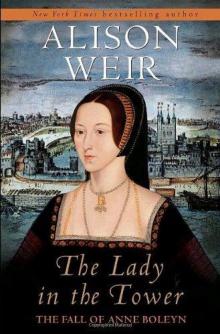 The Lady in the Tower: The Fall of Anne Boleyn
The Lady in the Tower: The Fall of Anne Boleyn Six Wives of Henry VIII
Six Wives of Henry VIII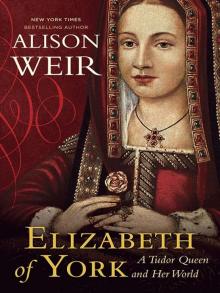 Elizabeth of York: A Tudor Queen and Her World
Elizabeth of York: A Tudor Queen and Her World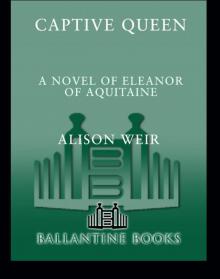 Captive Queen
Captive Queen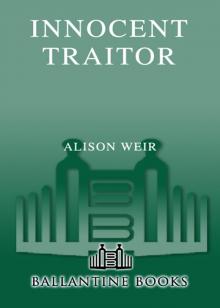 Innocent Traitor
Innocent Traitor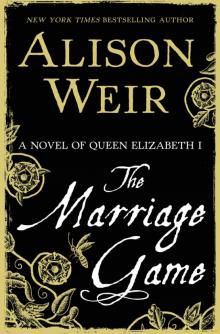 The Marriage Game
The Marriage Game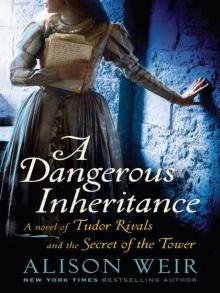 A Dangerous Inheritance
A Dangerous Inheritance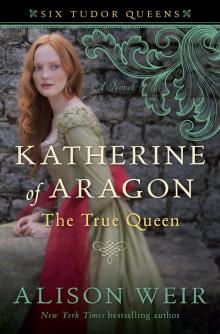 Katherine of Aragón: The True Queen
Katherine of Aragón: The True Queen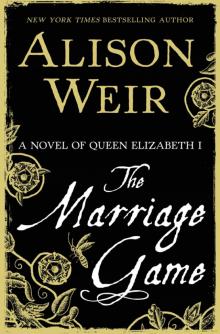 The Marriage Game: A Novel of Queen Elizabeth I
The Marriage Game: A Novel of Queen Elizabeth I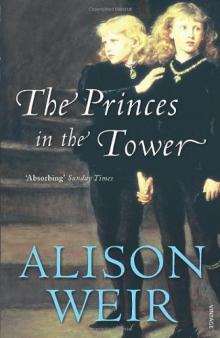 Princes in the Tower
Princes in the Tower Anne Boleyn: A King's Obsession
Anne Boleyn: A King's Obsession Traitors of the Tower
Traitors of the Tower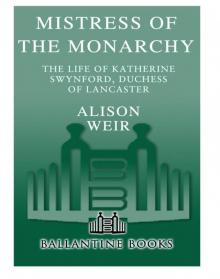 Mistress of the Monarchy: The Life of Katherine Swynford, Duchess of Lancaster
Mistress of the Monarchy: The Life of Katherine Swynford, Duchess of Lancaster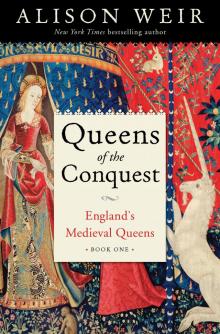 Queens of the Conquest: England’s Medieval Queens
Queens of the Conquest: England’s Medieval Queens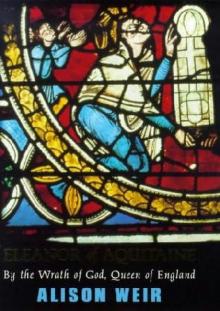 Eleanor of Aquitaine: A Life
Eleanor of Aquitaine: A Life Mary, Queen of Scots, and the Murder of Lord Darnley
Mary, Queen of Scots, and the Murder of Lord Darnley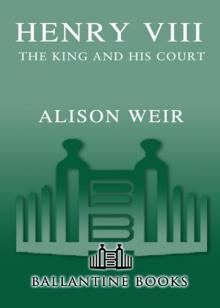 Henry VIII: The King and His Court
Henry VIII: The King and His Court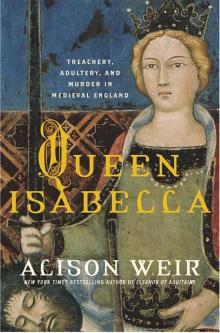 Queen Isabella: Treachery, Adultery, and Murder in Medieval England
Queen Isabella: Treachery, Adultery, and Murder in Medieval England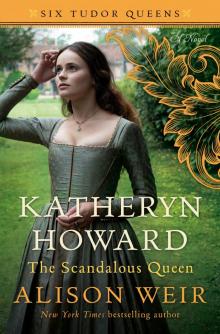 Katheryn Howard, the Scandalous Queen
Katheryn Howard, the Scandalous Queen Arthur- Prince of the Roses
Arthur- Prince of the Roses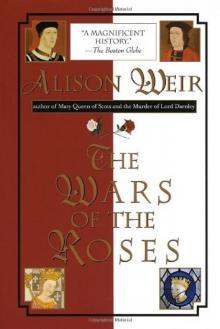 The Wars of the Roses
The Wars of the Roses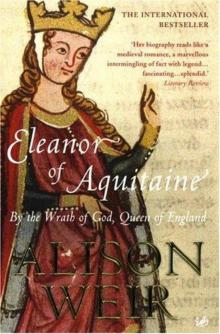 Eleanor of Aquitaine: By the Wrath of God, Queen of England
Eleanor of Aquitaine: By the Wrath of God, Queen of England Mary Boleyn: The Great and Infamous Whore
Mary Boleyn: The Great and Infamous Whore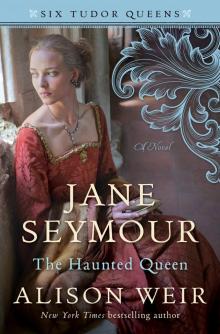 Jane Seymour: The Haunted Queen
Jane Seymour: The Haunted Queen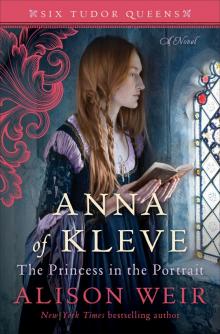 Anna of Kleve, the Princess in the Portrait
Anna of Kleve, the Princess in the Portrait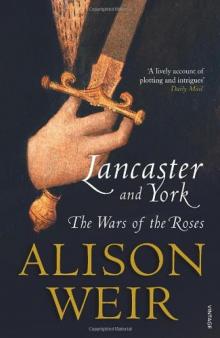 Lancaster and York: The Wars of the Roses
Lancaster and York: The Wars of the Roses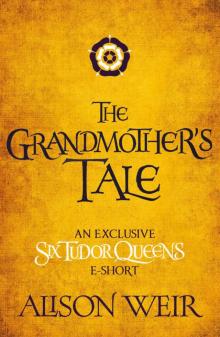 The Grandmother's Tale
The Grandmother's Tale The Princess of Scotland (Six Tudor Queens #5.5)
The Princess of Scotland (Six Tudor Queens #5.5)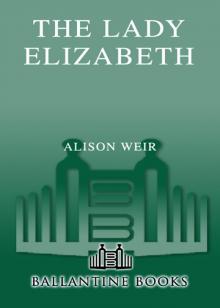 The Lady Elizabeth
The Lady Elizabeth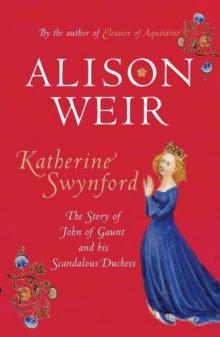 Katherine Swynford: The Story of John of Gaunt and His Scandalous Duchess
Katherine Swynford: The Story of John of Gaunt and His Scandalous Duchess The Curse of the Hungerfords
The Curse of the Hungerfords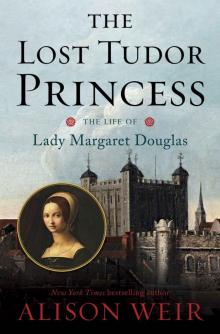 The Lost Tudor Princess: The Life of Lady Margaret Douglas
The Lost Tudor Princess: The Life of Lady Margaret Douglas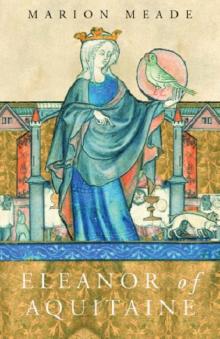 Eleanor of Aquitaine
Eleanor of Aquitaine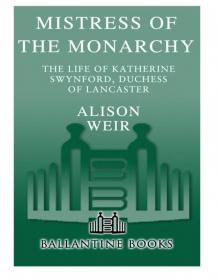 Mistress of the Monarchy
Mistress of the Monarchy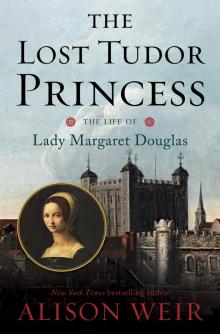 The Lost Tudor Princess
The Lost Tudor Princess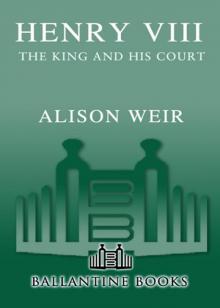 Henry VIII
Henry VIII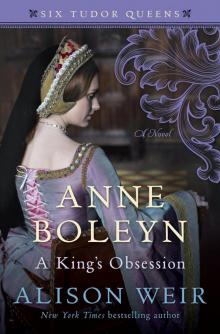 Anne Boleyn, a King's Obsession
Anne Boleyn, a King's Obsession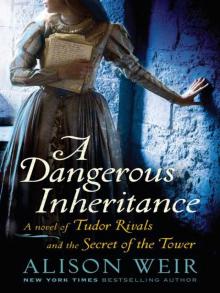 A Dangerous Inheritance: A Novel of Tudor Rivals and the Secret of the Tower
A Dangerous Inheritance: A Novel of Tudor Rivals and the Secret of the Tower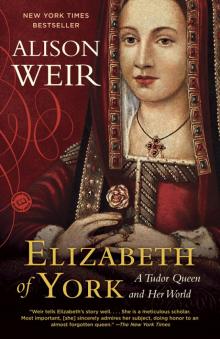 Elizabeth of York
Elizabeth of York Katherine of Aragon, the True Queen
Katherine of Aragon, the True Queen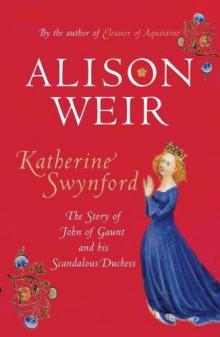 Katherine Swynford
Katherine Swynford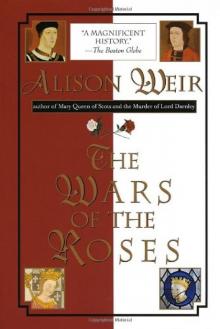 Wars of the Roses
Wars of the Roses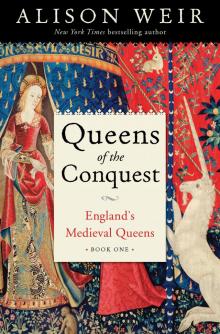 Queens of the Conquest
Queens of the Conquest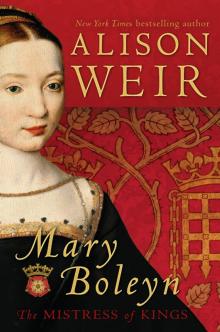 Mary Boleyn
Mary Boleyn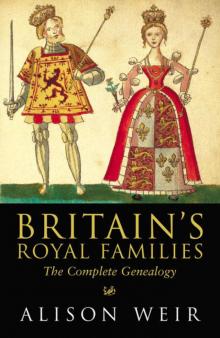 Britain's Royal Families
Britain's Royal Families The Tower Is Full of Ghosts Today
The Tower Is Full of Ghosts Today Life of Elizabeth I
Life of Elizabeth I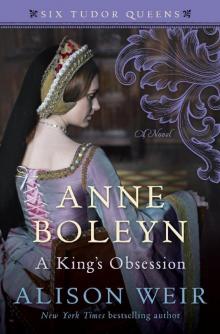 Anne Boleyn A King's Obssession
Anne Boleyn A King's Obssession Lancaster and York
Lancaster and York Jane Seymour, the Haunted Queen
Jane Seymour, the Haunted Queen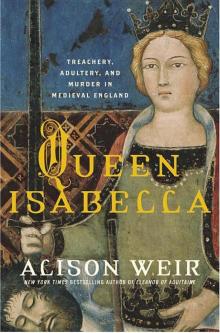 Queen Isabella
Queen Isabella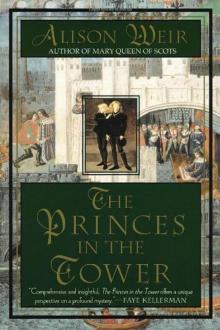 The princes in the tower
The princes in the tower